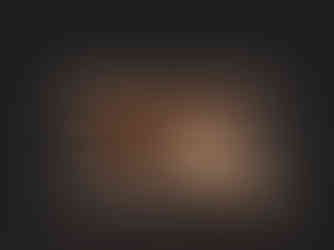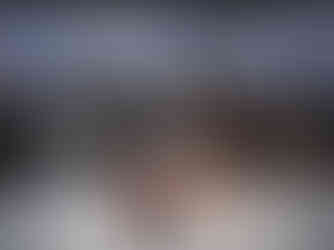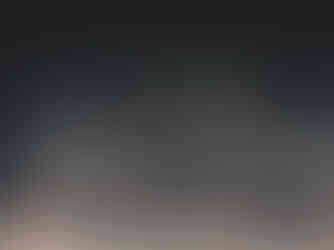Industry Icons: Chloe Lamford
- Live team

- Jun 18
- 6 min read
Chloe Lamford is a globally renowned stage designer who works across theatre, opera, music and installation. She also trained in theatre design at the Wimbledon School of Art and received the Arts Foundation Fellowship for Design for Performance in 2013. Her striking sets have been seen by audiences from all corners of the theatre scene, and she has been the creative mind behind some of the National Theatre’s most groundbreaking shows. She joins LIVE to share her inspiring journey, AV trends she’s picked up along the way and invaluable advice for anyone aspiring to follow in her creative footsteps.
Interview Verity Butler
Could you begin by taking us back to the start of your career and how you got into set design?
I’ve been interested in this space since my late teens and did quite a lot of drama before going to art school for a foundation. I was also a very keen photographer, but had to pick which to study – and I couldn’t skip theatre – so chose to do a degree in set design and then just got right into it after that. There’s always quite a weird thing that happens when you leave college where you think, ‘I just call myself a designer now?’. I initially worked for free at a youth theatre for a while, and worked my way up bit by bit from there.
In terms of photography, I just love it. In my alternate life, I think I would be a fine art photographer because I enjoy it very much and don’t get much time any more to keep little projects going or develop it. I found contemporary art collaborations later on, for those moments where I got frustrated with theatre and wanted to keep mining for deeper, conceptual thinking – bringing that back over into my stage work.
I’m always trying to broaden the edges of what I do, or finding other ways of collaboration such as installation, as it brings more depth to what I’m creating.
What are some of your favourite projects, and why are they so special to you?
I co-directed and designed a play at the National Theatre called The Antipodes, and that was a completely surprising way of working where I collaborated with the writer of the show itself. That was a real favourite because it blew my mind in terms of being able to take on more of the creation of a show.
I worked a few times with a Belgian director, Lies Pauwels, who influenced my work and made me feel I could be myself. We made four shows together, including Het Hamiltoncomplex, and they were hugely important to me in terms of how I developed my aesthetic and thinking. That’s because their process was instinctive, less focused on a set text or delivering a play, and more like a devised work where we formulated an environment together based on our conversations. It felt more like an artistic framework, where the interplay between people and objects created this kind of spatial collage – giving way to strange and unusual environments.
There was also Phaedra at the National Theatre, which I absolutely loved working on. We put five different sets into a 9x9m rotating glass box, meaning its contents changed completely with each scene.
Each show must be so different in terms of process. Do you have a rough framework you go by?
In terms of my studio work, I tend to start with an information-gathering phase, putting together images and generating mood boards in a document I can then share with the director to talk through.
I’ve collaborated with some amazing associates in the studio, and we work digitally. We tend to work a lot in Rhino, modelling up white card maquettes in 3D formats. Then we take different views of the theatre space, after which I’d go away and Photoshop them into it. I like to work with those digital white mass models a lot, passing them back and forth among the team and the director. We build on them as we get more information coming through. It then evolves into a bit of a digital profile, which is later built into a storyboard.
It’s changed a lot because we work differently – and more digitally. We used to sit with a physical cardboard model with a director, but since Covid-19 it’s so much more online. We’ve stepped up our studio’s digital work and how we render. I’m now working with architects a fair bit who have left architecture and moved into set design.
That’s been an interesting shift in theatre design. When I was at school, there was less focus on software training. I believe that’s now evolving because everyone is more technically savvy.
That’s probably why there’s been a lot of interest in set design from the architectural industry. I’ve worked with architects on two projects now, where I come in and bring a theatre head or my dramaturgy of how a space can be used, and it’s usually a really exciting and dynamic conversation.
The world of live entertainment ground to a sudden halt thanks to the global pandemic in 2020. Do you still feel its impact five years on?
The toughest thing was that there was just nothing happening, which was so heartbreaking. I think we are all still processing and evolving from that.
A lot of my work is abroad, in both Europe and the US. Now, I use Zoom a lot more, so that felt like a massive shift. I used to fly everywhere all the time. But now I don’t live in London any more – my studio is out of London – and I have the freedom to work from home and connect with people online.
How does AV technology bring your work to life?
I work closely with light designers, and an idea I find very interesting is using projection as a light source. I also get excited by video, especially when it’s used conceptually and feels like it’s part of the design and helps to tell the story.
When I worked on 1984 a few years ago, we needed a concealed CCTV camera and a hidden set on stage that was only revealed at one point. Although the projection was part of the set, it was accepted as part of the theatre. The concept was a play that falls apart, with the set gradually dismantling to reveal everything had been filmed all along – offering a deeper understanding of the Big Brother element in the story.
I love it when different strands of theatre become meshed together; it’s like one part can’t function properly without the other. Technology can end up becoming an important part of theatre’s language.
Do decisions on set design have a domino effect on lighting?
I have to think about lighting a lot, and I want to work with lighting designers in the process sooner so we can build things in together from an earlier stage.
For example, I have a set coming up for the National Theatre that involves loads of electrics and built-in effects. We can do things like change the colour temperature of a space that might initially look the same, but then uses light in completely different ways. Changing architecture with lighting design is a fun part of my work too.
You mentioned the increased use of video in performance – are you noticing any other tech trends emerging in theatre?
I’m getting into light boxes at the moment. In Phaedra, the entire ceiling of the large glass cube that made up the set was a light box. It gave everything on stage a beautiful clarity – and I’m about to use another one in an upcoming project I’m working on.
Finding these grander gestures, lighting-wise, can be interesting – and is something I’m definitely seeing more of. I think dance lighting has also had significant influence, which feels much more sculptural.
Overall, I think theatre is going in two different directions. On one end, there’s a trend for minimalist spaces, and then by extension of that, the use of people in those spaces. That has evolved a lot in an exciting way.
But another is a sharp increase in technology, effects, illusions and magic. LED screens are becoming so high spec that you can create an illusion of depth by combining them with built scenery – this is really exciting. In some cases, the audience can’t tell where the LED or video starts or ends, making the set feel like it stretches on forever.
We’re able to do a lot more high-specification LEDs in theatre, which deliver more opportunities now that technology is more accessible to productions across the board.
What advice would you give anyone who wants to get into set design?
I think it’s changed a lot since I started. I had to go through every level, but now you can jump around a lot more. You have to really love and want it, because it takes a long time to work your way up to bigger projects. It’s not easy, and it’s not massively well paid for a long time either! You’ve got to try and get a wide skill set. Learn good software to make yourself extra employable.
Also, try and find the opportunity to work with other designers – they can be great mentors. I used to work with Es Devlin, and she taught me so much about scale and ambition in your work.
Buckets of passion is the most important thing you’ll need, though.
To learn more about other industry icons, head to this article about Christopher Schardt. Discover more about Chloe Lamford’s work at chloelamford.com
This feature was first published in the May/Jun 2025 issue of LIVE.
























